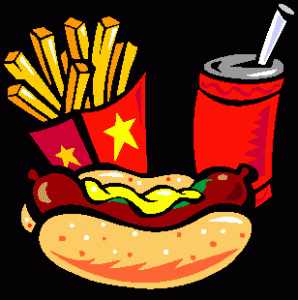Do you have a clue about how much added sugar you eat each day?
Added sugar is the kind that doesn”t occur naturally, like in fruit, but is added during food processing, preparation, or at the table.
Because food labels show only grams or percentages of sugar in a product rather than the number of calories or teaspoons it contains, it’s hard to tell the number of teaspoons of sugar you’re eating. Food labels also don’t list which sugars are natural and which are added. Sugar does masquerade under many different names and in many forms. You usually are aware that candy, cookies, and soda have sugar in them – although probably not how much. You know when you are dousing your pancakes with syrup (how many teaspoons?) or dumping packages of sugar into your coffee for a “pick me up.” But, who thinks of hamburger buns and crackers – or even ice cream or canned fruit — in terms of teaspoons of sugar?
Recommended Amounts of Added Sugar
The American Heart Association recommends that most women limit their sugar intake to 100 calories (25 grams), or around six teaspoons a day — men should limit their intake to 150 calories (37.5 grams), or nine teaspoons. (Although there were no sugar recommendations for children, a national health survey found that 14 to 18 year olds consume 34 teaspoons of added sugar a day!)
Restricting yourself to the recommended limit might be difficult, since one 12-ounce can of soda has about 130 calories, or eight teaspoons of sugar. Data collected by a national nutrition survey between 2001 and 2004 suggested that, on average, Americans consume 355 calories, or more than 22 teaspoons, of sugar a day, the equivalent of two cans of soda and a chocolate bar.
What’s the big concern about eating too much sugar?
Eating a lot of added sugar is linked to the rise in obesity and is associated with increased risk for high blood pressure, high triglyceride levels, and other markers for heart disease, stroke, and inflammation. Because sugar just provides calories with no other nutritional value, for many people eating sugary foods and beverages can displace the more nutritious ones that are part of a healthy diet.
The Biggest Sugar Culprits
According to an article in Circulation, the biggest culprits for added dietary sugar are:
Regular soft drinks: 33%
Sugars and Candy: 16.1%
Cakes, cookies, pies: 12.9%
Fruit drinks (fruit punch and fruitades): 9.7%
Dairy desserts and milk products (ice cream, sweetened yogurt, sweetened milk: 8.6%
Other Grains: (cinnamon toast and honey-nut waffles): 5.8%
SocialDieter Tip:
Added sugars have no nutritional value other than calories. Many of us can reduce our risk of heart disease by achieving a healthy weight. There’s pretty strong evidence that decreasing the amount of sugar in your diets can help you achieve that. You don’t have to eliminate sugar from your diet, just use your allotment wisely. Make trade-offs. Use more fruit to add sweet flavor to cereals, yogurt, as dessert, and for snacks. Cut back on candy and way back on sweetened sodas, teas, and flavored waters. Help your kids learn that so much sugar is not necessary, train their palates when they’re young to enjoy less sweet food. And, read labels, know where hidden sugar hangs out. Be aware and smart about what you buy and eat – both in and out of your home.




